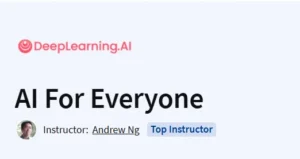What will you learn in this Ecology: Ecosystem Dynamics and Conservation Course
Understand ecosystem recovery through a case study of Gorongosa National Park.
Explore population dynamics and species interactions within ecosystems.
Analyze energy flow and matter cycling in ecological systems.
Examine human impacts on ecosystems and conservation strategies.
Apply systems thinking to ecological and conservation challenges.
Program Overview
1. Can an Ecosystem Recover?
⏳ Approximately 1 hour
Investigate the potential for ecosystem recovery after disruption, focusing on Gorongosa National Park’s restoration post-civil war.
2. How Do We Study Populations?
⏳ Approximately 1 hour
Learn methods for studying populations, including roles of keystone species and population dynamics.
3. How Do Species Coexist?
⏳ Approximately 2 hours
Examine community ecology, species interactions, and the effects of species addition or removal on ecosystems.
4. How is an Ecosystem a System?
⏳ Approximately 1 hour
Understand ecosystems as systems through energy flow, matter cycling, and interactions of biotic and abiotic factors.
5. What is the Future of Conservation?
⏳ Approximately 1 hour
Explore conservation in the Anthropocene, addressing human roles and strategies for ecosystem management.
Get certificate
Job Outlook
Prepares learners for roles in environmental science, conservation, and ecology.
Applicable in NGOs, governmental agencies, and research institutions.
Enhances understanding of ecological principles for educators and policymakers.
Supports careers in sustainability and environmental management.
Specification: Ecology: Ecosystem Dynamics and Conservation
|
FAQs
- No formal biology or ecology degree is necessary.
- Basic understanding of science concepts is helpful.
- The course introduces ecological principles from the ground up.
- Suitable for beginners, conservation enthusiasts, and students.
- Focuses on real-world examples and practical conservation issues.
- Explains ecosystem dynamics and species interactions.
- Covers human impacts on biodiversity and habitats.
- Introduces conservation strategies and sustainable practices.
- Helps analyze ecological data to make informed decisions.
- Provides a foundation for environmental policy and research.
- Environmental consultant or analyst roles.
- Conservation and wildlife management positions.
- Research assistant or ecological field technician jobs.
- Roles in NGOs and environmental policy organizations.
- Sustainability and corporate environmental responsibility positions.
- Includes case studies of real ecosystems.
- Exercises involve ecosystem modeling and data interpretation.
- Provides practical examples of conservation techniques.
- Encourages observation and analysis of local environments.
- Strengthens understanding through applied problem-solving scenarios.
- Covers terrestrial, aquatic, and urban ecosystems.
- Discusses biodiversity preservation and habitat restoration.
- Introduces global and local conservation policies.
- Explains ecosystem services and their importance for humans.
- Focuses on sustainable practices to balance human and environmental needs.





